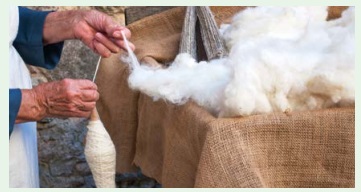Plants in Daily Life | Term 3 Unit 5 | 6th Science - Fibre yielding plants | 6th Science : Term 3 Unit 5 : Plants in Daily Life
Chapter: 6th Science : Term 3 Unit 5 : Plants in Daily Life
Fibre yielding plants
Fibre yielding
plants
Plants which give us fibres necessary for our
uses are called as Fibre yielding plants. The fibre from these
plants can be spun into thread , rope, and cloth. These fibres are
called as natural fibres.
We can classify the Fibre yielding plants into
two types based on the uses and the parts of the plant from where we get the
fibre.
Based on Use
1. Textile Fibres (making cloth), eg: Cotton
2. Cordage Fibres (making rope) eg: Coconut
Fibre
3. Filling Fibres (making mattresses).
eg: Silk cotton
Based on the
plant parts
1. Plant Fibres
include seed hairs eg: cotton;
2. Stem (or bast)
Fibres eg: flax, jute;
3. Leaf Fibres eg: Agave,
4. Husk Fibres eg: coconut.
In India, Jute crop is grown in
seven states – West Bengal, Assam, Odisha, Bihar, Uttar Pradesh, Tripura and
Meghalaya. West Bengal alone accounts for over 50% of raw jute production.
Activity 4: Take a small quantity of cotton
swap. Hold it between your thumb and fore finger. Now, gently start pulling out
the cotton, while continuously twisting the Fibres. Are you able to make a
yarn?
The process of making yarn from Fibres
is called Spinning.

Related Topics